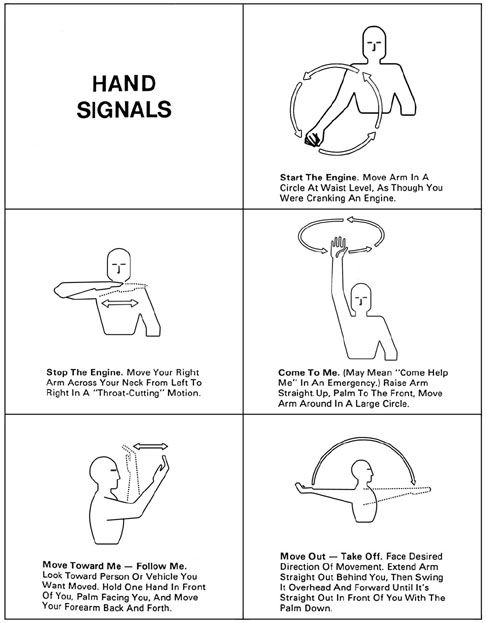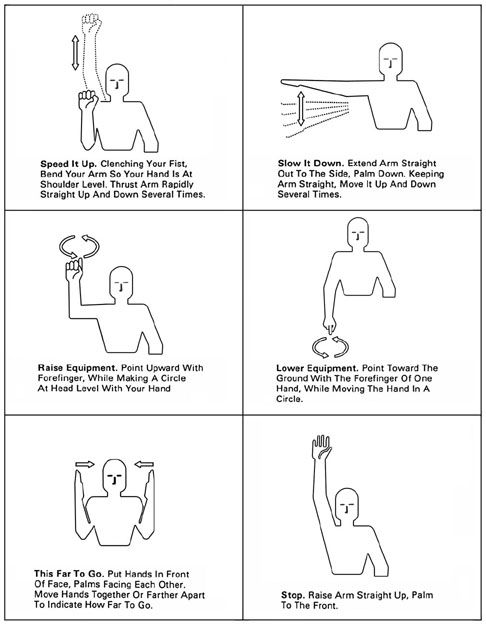Tips for Maneuvering
- Slow down on turns and curves. A tractor's turning radius is much smaller than an automobile's. Taking a curve too quickly can cause an overturn or a jackknife if machinery is attached.
- Make sure that maneuvers when entering, turning, or leaving the highway do not interfere with other traffic.
- Keep in mind that towed equipment might swing into the oncoming lane.
- Only use stable and well-maintained road shoulders. Using unstable edges and shoulders can cause a tractor to overturn. Additionally, driving along the edge can be misleading to motorists. They may pull out to pass just as the tractor re-enters the roadway to avoid a mailbox or bridge. Remember that many motorists aren't familiar with tractors or agricultural equipment.
- To let a line of cars pass, pull over to the side and stop; otherwise, a culvert, mailbox, or other hazard might force the tractor to re-enter the roadway while cars are still passing.
Hazards of Filling Gas Cans
Vehicle fires sometimes occur while people are filling metal gas cans placed on plastic surfaces. This type of fire usually involves a gas can in the back of a pickup truck with a plastic bed liner.
Gasoline tends to carry a static electric charge. When gasoline is poured into a can, this charge can build up on the can. If the can is sitting on concrete or the ground, the static charge can safely flow away. However, when the can is sitting on plastic, such as the plastic bed liner in a truck, the static charge cannot escape because the plastic is an insulator (i.e., it does not conduct electricity). A spark can occur between the can and the fuel nozzle and ignite the gasoline.
When the spark occurs in the flammable range in the gasoline vapor space near the open mouth of the gas can, a fire occurs.
Only use gas cans approved by OSHA and follow these precautions.
- Only use an approved container.
- Do not fill any container while it is inside a vehicle.
- Always place the container to be filled on the ground and away from other people and traffic.
- Keep the nozzle in contact with the can while filling.
- Never use a latch-open device to fill a portable container.
- Do not smoke.
- While transporting containers, tie them in place.
What to Do When the Tractor Gets Stuck
Getting stuck can be inconvenient and feel embarrassing, but it happens all the time. Getting unstuck can be very dangerous, so do not act unsafely due to irritation or embarrassment. If you need help, set an example and get help.
- Always try to back out. Trying to drive forward is dangerous and can result in a rear overturn.
- If backing out is not possible, get towed out forward by hitching to the tractor frame.
- If the tractor must be towed out backward, hitch only to the drawbar.
- When towing, use a chain or steel cable and tighten it slowly. Do not use a nylon rope because it can stretch and break, then snap back, resulting in serious injury or death. These have snapped back and thrown the cable hook through the cab window, killing the operator.
- It is important to seek help from an experienced operator when pulling out a tractor, as this task can be hazardous.
Used Equipment
The condition of equipment sold at auctions or transferred from person to person varies widely, so it is important to examine used equipment carefully. When equipment is purchased through a dealership, the purchase usually includes a warranty, directions for maintenance and operation, warnings, seals of approval, and assurances that the equipment conforms to voluntary or federal standards. Regardless of where equipment is bought, look for aspects that may detract from safety, such as missing shields and inadequate upkeep. A bargain price is not worth the risks involved. Do not be taken in by a "sale" and end up with substandard equipment.
Consider the following questions when buying used equipment.
- Are operating manuals included?
- Are shields and guards in place?
- Is the equipment in decent condition? Breakdowns due to poor maintenance could cause unsafe working conditions.
- If buying a tractor, is the tractor equipped with a ROPS? If it is not, determine who is responsible for paying for the ROPS and making sure it is installed properly. Tractors manufactured after October 1976 that are used by employees are required to have ROPS and seat belts per OSHA Standard 1928.51 (“Roll-Over Protective Structures (ROPS) for Tractors Used in Agricultural Operations”).
Hand Signals
Hand signals have been developed to provide a uniform means of communication between workers on the ground and equipment operators. They are especially useful when noise, distance, or language barriers make spoken communication difficult. There are 11 recognized hand signals found in ASAE Standard S351. They are illustrated in the figures below (Figures 1 and 2).

Credit: Lehtola and Brown (2009)

Credit: Lehtola and Brown (2009)
Handling Large Hay Bales
When moving large bales, remember: Low and Slow. Avoid sudden movements and turns which can easily cause the tractor to overturn. The higher the loader is raised, the higher the center of gravity will become, and the easier the tractor will overturn. Only use equipment such as a grapple hook or bale spike that is designed to be used with your tractor model for bale transport. Placing a bale in a regular tractor bucket and anchoring it with a chain is not adequate. Bales, especially if wet and thus very heavy, can snap the chain. The bale then rolls down the loader arms and crushes the operator. If the bale remains on the tractor, it may catch fire from exposure to hot engine components. The trapped operator will then be burned.
Additional Safety Information
Websites
- For more information about these and many other safety topics, contact your county’s UF/IFAS Extension office, or visit the Florida Agricultural Safety and Health Program website at https://abe.ufl.edu/agsafety/.
- Consult Tractor Fundamentals: Best Practices, North American Guidelines for Children's Agricultural Tasks. For more information, contact the National Children's Center for Rural and Agricultural Health and Safety at http://www.marshfieldresearch.org/nccrahs.
- Consult the Outdoor Power Equipment Institute at http://www.opei.org.
- Consult the National Agricultural Safety Database at http://nasdonline.org.
Safety Standards
- "Hand Signals for Agriculture," ASAE Standard S351
- "Operator Controls on Agricultural Equipment," ASAE Standard S335.4
- "Roll-Over Protective Structures (ROPS) for Wheeled Agricultural Tractors," ASAE Standard S383.1
- "Symbols for Operator Controls on Agricultural Equipment," ASAE Standard S304.5
- "Roll-Over Protective Structures (ROPS)," Occupational Safety and Health Administration, OSHA Standard 1928.51
Safety Decals
- "No Riders" decals may be purchased from various tractor supply companies.
Reference
Lehtola, C., and C. Brown. 2009. “Safer Tractor Operations for Landscape Maintenance and Horticultural Industries.” CIR1252. https://ufdc.ufl.edu/IR00003308/00001/pdf